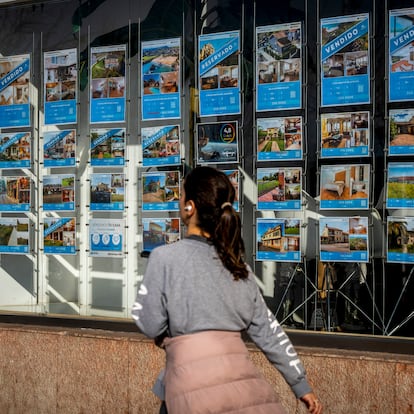The housing crisis in four charts



Madrid - CET
The housing crisis has taken hold in Spain and in many other countries in the European Union over the last decade. The origin of this crisis varies depending on the community partner we are talking about at any given time, as each State has its own conditions and a specific background.
In the case of Spain, the factors that have led to the current overheating of the real estate market are clear. On the one hand, due to the construction and investment halt that came after the bursting of the real estate bubble, much less housing has been built in Spain in the last 15 years compared to the previous ones, which has reduced supply and, therefore, made prices much more expensive.
Added to this situation is the fact that, of the little that has been built, the percentage of protected housing continues to decline, and went from representing 10% of the total housing stock built at the end of the first decade of the century to a paltry 3.2% in 2020, according to the Ministry of Housing, a figure that is even estimated to be lower today. Spain's numbers pale in comparison to those of other European economies, which have a percentage of social housing that is around 30% in some cases.
Legislative regulation has not helped either, as the protected housing regime in Spain generally allows for housing to be transferred to the free market after a few years, where prices are much higher. This means that a stable protected housing stock has not been maintained that would allow people with fewer resources or in vulnerable situations to access housing; something that is currently impossible due to purchase prices and rising rents, which are in turn pressured by the shortage of supply.
This closes a circle that can only be broken, as was discussed at the Forum, with political initiatives that prioritize and protect social housing, promote the increase in supply on the free market and establish a specific regulatory framework for issues such as the status of protected housing or seasonal or holiday rentals, which also contribute to the problem by removing supply.
Do you want to add another user to your subscription?
If you continue reading on this device, it will not be possible to read on the other device.
ArrowIf you want to share your account, change your subscription to Premium mode, so you can add another user. Each one will access with their own email account, which will allow you to personalize your experience at EL PAÍS.
Do you have a business subscription? Click here to purchase more accounts.
If you don't know who is using your account, we recommend changing your password here.
If you choose to continue sharing your account, this message will be displayed on your device and the device of the other person using your account indefinitely, affecting your reading experience. You can check the terms and conditions of the digital subscription here.
EL PAÍS






